- Home
- Deborah Harkness
The All Souls Real-Time Reading Companion
The All Souls Real-Time Reading Companion Read online
Copyright © 2015 Deborah Harkness
The right of Deborah Harkness to be identified as the Author of the Work has been asserted by her in accordance with the Copyright, Designs and Patents Act 1988.
This Ebook edition was first published by Headline Publishing Group in 2015
All characters in this publication are fictitious and any resemblance to real persons, living or dead, is purely coincidental.
Cataloguing in Publication Data is available from the British Library
Author photo credit: Vania Stoyanova
eISBN: 978 1 4722 3135 2
HEADLINE PUBLISHING GROUP
An Hachette UK Company
Carmelite House
50 Victoria Embankment
London EC4Y 0DZ
www.headline.co.uk
www.hachette.co.uk
Contents
Title Page
Copyright Page
About the Book
About Deborah Harkness
Praise for Deborah Harkness
A Discovery of Witches
Real-time Reading Calendar
Real-time Reading Companion Notes
Shadow of Night
Real-time Reading Calendar
Real-time Reading Companion Notes
The Inspiration for A Discovery of Witches and the All Souls trilogy
Discover The World Of . . .
Photograph Credits – A Discovery of Witches
About the Book
It began with A Discovery of Witches. It continued with Shadow of Night. Now, as The Book of Life has brought Deborah Harkness’s stunning No.1 internationally bestselling trilogy to its finale, enrich your experience of the heart-stopping conclusion by stepping deeper into the fantasy world Deborah has created.
This exclusive All Souls trilogy real-time reading guide brings to life A Discovery of Witches and Shadow of Night with exciting behind-the-scenes extra content.
If you are a new reader, you can immerse yourself in the real-time world of the All Souls trilogy by following this chapter-by-chapter timeline, enjoying Deborah’s fascinating background notes along the way (caution: there will be spoilers for new readers so don’t get ahead of yourself). For those avid fans who have already read and loved the books, why not step back into Diana and Matthew’s enchanting story. Here collected for you exclusively in one volume are some of the wonderful notes Deborah has shared about the people, places, music and history that inspired her when writing the books.
About Deborah Harkness
‘I began to wonder, If there really are witches and vampires, what do they do for a living? A DISCOVERY OF WITCHES is the unexpected answer to that question.’
Deborah Harkness is a historian of science and a professor of history at the University of Southern California. The recipient of fellowships from the American Council of Learned Societies, the Guggenheim Foundation, and the National Humanities Center, Harkness has also been awarded the History of Science Society’s Pfizer Award and Derek Price Prize, and the North American Conference on British Studies’ John Ben Snow Prize. She spent several years in Oxford doing research (and really did once find a missing manuscript in the Bodleian Library!). She has written The Jewel House: Elizabethan London and the Scientific Revolution as well as the three books of the highly acclaimed and internationally bestselling All Souls trilogy.
Praise for The Book of Life:
‘Rich in arcane detail, fans will relish this exotic cauldron of romantic fantasy’ Sunday Mirror
‘I could not imagine a better way to leave my favourite characters and trilogy. The Book of Life is stunning’ Compelling Reads
‘A perfect ending to a spellbinding trilogy, Harkness has woven her characters into my life; this is a series I will be re-reading in the not-too-distant-future!’ Elise Italiaander, Audible Blog
‘The research and writing in The Book of Life is what I have come to expect from Harkness – erudite, engaging and clever, using her academic knowledge to underpin a sweeping and increasingly complex tale . . . The Book of Life was worth waiting for and comes highly recommended’ Curious Book Fans
‘A beautifully written, fitting end to a wonderful trilogy’ Notes of Life
Praise for Shadow of Night:
‘[A] magnificent sequel to A Discovery of Witches. Her weaving of time and ancient lore, of modern science and alchemy, or vampires, daemons and all too mortal humans is magical and utterly addictive’ Manda Scott
‘An inventive addition to the supernatural craze . . . recounted with enchanting, page-turning panache’ Marie Claire
‘We devoured it . . . If magic, witches, vampires, love, lust and time travel are your thing (with cameos from Queen Elizabeth the First and Shakespeare), Shadow of Night is your perfect companion’ Glamour
‘As with the first book, comparisons to Twilight from previous reviewers do it no justice . . . This is truly a gem of a book that deserves to stand on its own’ British Fantasy Society
Praise for A Discovery of Witches:
‘Gripping and impossible to put down, this is Twilight for grown ups – a wonderful read!’ Katie Fforde
‘A romp through magical academia’ Guardian
‘Romantic, erudite, and suspenseful’ O, The Oprah Magazine
‘A spellbinding saga . . . unputdownable’ Woman & Home
It begins with absence and desire. It begins with blood and fear. It begins with . . .
Real-time Reading Calendar
Message from Deborah
Around September 2008, I started writing what would turn out to be A Discovery of Witches. As many of you know, the main action of the book takes place over forty days between September 21 and October 31. Diana Bishop’s first encounter with Ashmole 782, however, occurred on September 18. Why not read or re-read A Discovery of Witches as the action elapses? Some days have more than one chapter, and others have none at all, but it’s interesting to read it and have just as much time as Diana and Matthew did to absorb the enormous changes happening to them, and all around them. It may give you new insights.
Please note: because the action of the book starts on a Friday, the days of the week will be wrong, but the dates are right and you will end up, as they did, on Halloween.
Real-time Reading Companion Notes
18 September, Chapter 1:
The leather-bound volume was nothing remarkable. To an ordinary historian, it would have looked no different from hundreds of other manuscripts in Oxford’s Bodleian Library, ancient and worn.
Inside Duke Humfrey’s, the Bodleian Library.
21 September, Chapter 2:
No matter what I told myself in the quadrangle, my walk home was faster than usual. The gloom of New College Lane was a spooky proposition at the best of times.
New College Lane, Oxford.
21 September, Chapter 3:
The vampire sat in the shadows on the curved expanse of the bridge that spanned New College Lane . . .
The Bridge of Sighs, Oxford
22 September, Chapter 4:
I managed to get down river, but the serenity of the outing had evaporated. Turning the boat in front of the Isis Tavern, I spotted Clairmont standing beside one of the pub’s tables. He’d managed to get there from the Donnington Bridge – on foot – in less time than I’d done it in a racing scull.
Here you can see the stretch of river Diana is rowing down, with the Isis Tavern (now called the Isis Farmhouse) in the distance, where she finds Matthew waiting for her.
23 September, Chapter 6:
The manuscript inside the next box was smaller than the last, but it contained interesting sketches of alchemical appara
tus and snippets of chemical procedures that read like some unholy combination of Joy of Cooking and a poisoner’s notebook.
Claudio de Dominico Celentano di Valle Nove, Book of Alchemical Formulas (Naples, 1606), images of chemical purification through sunlight and moonlight, pp. 8–9. Manly Palmer Hall Collection of Alchemical Manuscripts: http://www.getty.edu/research/special_collections/highlights/alchemy/index.html
24 September, Chapter 7:
We walked in silence for a few minutes, wrapped up in the gray fog and the strangeness of being alone, witch and vampire.
Christ Church Meadow, Oxford
25 September, Chapter 8:
A two-story Tudor manor house was arranged around a central courtyard. Its bricks glowed in the illumination of powerful spotlights that shone through the branches of gnarled oak trees to light the face of the building.
My inspiration for the Old Lodge was Speke Hall, near Liverpool, owned and operated by the National Trust. It’s not exactly true to the Cotswolds in architectural style, but I visited this house for the first time in 1973 (I was eight) and it has been the house of my dreams ever since. If you are in the north of England, please stop by to visit the house and support the National Trust’s efforts to preserve British heritage.
25 September, Chapter 8:
‘My sister Louisa,’ he said, coming around the counter with a fully outfitted tea tray. He looked up at the canvas, his face touched with sadness.
The image that inspired my vision of Louisa de Clermont is ‘Portrait of a Lady’ probably Mary Parsons, later Mrs Draper by Peter Lely, ca. 1665, which can be seen at the wonderful Fitzwilliam Museum, Cambridge: http://webapps.fitzmuseum.cam.ac.uk/explorer/index.php?oid=3584.
26-29 September, Chapter 9:
Pulling up to what had been the back entrance of an old hunting lodge, where rough brown stone stood in sharp contrast to the creamy stuccoed front, he climbed out of his Jaguar and lifted his bags from the trunk.
Here you encounter Hamish Osborne’s Scottish hunting lodge for the first time. In case you are wondering about my inspiration, it was Chatelherault in Hamilton, Scotland. Built in 1732 as a hunting lodge for the Dukes of Hamilton, Chatelherault is all that remains of a once-grand estate. Can’t you just picture Matthew and Hamish playing chess here?
26-29 September, Chapter 10:
Fleeing from the warden’s lodgings, I turned toward my old refuge in the cloisters and walked among the pillars until my pulse stopped racing. My mind was occupied with only one question: what to do now that two witches – my own people – had threatened me in the space of a single afternoon.
New College Cloister, Oxford University.
26-29 September, Chapter 10:
I glanced through the small window stuck into the swinging door that led to the Upper Reading Room, and I gasped. The room was full to bursting with creatures.
As a research student at Oxford I spent a lot of time in libraries – college libraries like All Souls, Merton, Corpus Christi, the History Faculty Library, as well as most of the reading rooms at the Bodleian. When I wasn’t in Duke Humfrey’s looking at rare books and manuscripts, my friends knew they could find me in the Bodleian’s Upper Reading Room surrounded by index cards and notes.
The amazing architecture, painted friezes along the walls, and the collection of portraits atop the bookcases provide plenty of inspiration for any historian – or novelist.
30 September, Chapter 11:
He pulled off Holywell Street into the arched gates of the lodge. Fred glanced at the car and grinned before looking discreetly away.
View from the east end of Holywell Street looking west with New College on the left.
1 October, Chapter 12:
Matthew shook his head. ‘No. It was 1811.’ I stared in astonishment at the almost two-hundred-year-old wine in my glass, fearing it might evaporate before my eyes.
A bottle of 1811 Château Yquem (now known as Château d’Yquem, but that name was not used in the 1811 label). This was the famous ‘comet vintage’ that Matthew gives to Diana. A bottle of this wine was sold in the summer of 2011 for approximately $123,000 (US). I was not the buyer.
Read more about it here:
http://thetastingbook.com/wine/chateau_dyquem/dyquem_1811
1 October, Chapter 12:
The main dish was the only part of the meal that required heat, and not much of it. I had already made a bizarre biscuit-like thing from ground chestnuts. All that was left for me to do was sear some rabbit. The list of ingredients included rosemary, garlic, and celery. I decided to forgo the garlic. With his sense of smell, garlic must overpower everything else – there was the nugget of truth in that vampire legend.
What do you make if a vampire is coming to dinner? While Matthew spent most of the day wondering what would happen later when he was alone with Diana (if you are wondering what I thought might be going through his romantic brain during these long hours, listen to The Spill Canvas’s ‘The Night Will Go As Follows’. It will make you smile.), Diana was shopping and worrying about what to feed this new friend of hers.
Dating a vampire would be a challenge. A huge challenge. Because food is a major way for warmbloods to share, get to know each other, and socialize. There had to be ‘something’ for Diana and Matthew to share besides mutual passion, which is why there is such an emphasis on wine as something they can at least converse about over the dinner table.
But of course, as Matthew points out, he ‘can’ and does eat. And bless Diana: she tried to come up with a vampire appropriate meal – which meant I had to do so, as well. All of the recipes are on the web in one form or another, but this dish for rabbit and chestnut cakes struck me as a winner straight away. It’s based on a traditional Tuscan dish. Olives and garlic are optional if you are serving it to vampires. I imagine it would be quite good with little, butterflied Cornish game hens if you don’t want to go down the rabbit route, or even some chicken pieces – though of course if you are cooking poultry be careful to cook it properly.
If you are making this recipe, please note that it involves Australian measurements and temperatures and make the necessary adjustments for where you live: http://www.sbs.com.au/food/recipes/rabbit-chestnut-cake.
Matthew and Diana have a wonderful Rhone Syrah with this dish. Here, they suggest a far more affordable red Shiraz from Australia – which is the same grape so it’s a good choice.
1 October, Chapter 12:
My face softened at his beautiful, ancient features. How could people walk by him on the street and not gasp. Before I could stop myself, my toes were gripping the old rug and I was stretching up to kiss him quickly on the cheek.
Oh, a first kiss.
Over the course of the evening, in between the wine and the food and the conversation, Diana has given up trying to deny her feelings for Matthew.
Over the Rhine’s ‘Drunkard’s Prayer’ is the song that accompanied the writing of most of their conversation about wine and history and science. And yes, their first kiss, too.
https://www.youtube.com/watch?v=f3ZucFa_Ra4
2 October, Chapter 13:
The gloomy weather made him look a little less startling, but it wasn’t enough to make him blend in entirely. People turned and stared in the Bodleian’s central courtyard, then shook their heads.
Inside the Bodleian Library’s courtyard.
3 October, Chapter 14:
A pair of ornate, scrolled gates guarded his college as if it were Wonderland.
The All Souls College gates, Oxford.
5 October, Chapter 15:
It had been no more than an hour since I’d been with Matthew, but the sight of him stretched out among the first bay of Elizabethan desks in one of the medieval wing’s purgatorial chairs was welcome.
Inside Duke Humfrey’s, the Bodleian Library.
6 October, Chapter 17:
In the center of rolling hills was a flatt
ened peak dominated by a crenellated hunk of buff and rose stone. Seven smaller towers surrounded it, and a turreted gatehouse stood guard in front. This was not a pretty, fairy-tale castle made for moonlit balls.
Chateau Dauphin near Pontgibaud in the Auvergne, the castle that served as the model for Sept-Tours.
7 October, Chapter 19:
Fly, I encouraged her silently. Rakasa shot forward as if she’d been slapped on the rump, and my instincts took over.
An Andalusian horse, the breed that Ysabeau rides.
8 October, Chapter 21:
This vampire didn’t care who knew he was different. His wolfish expression was the only imperfection in an otherwise angelic face, with symmetrical features and dark hair worn curling low on to his collar.
Andrea del Sarto, Portrait of a Man: my inspiration for the character Domenico Michele.
9 October, Chapter 24:
From afar I beheld a black cloud covering the earth. It absorbed the earth and covered my soul as the seas entered, becoming putrid and corrupted at the prospect of hell and the shadow of death.
The image of the ‘dark sun,’ representing the step in the alchemical process called nigredo. This is from the Splendor Solis, a famous illustrated alchemical manuscript, and the picture below comes from the British Library’s copy, Harley MS 3469, dated 1582.

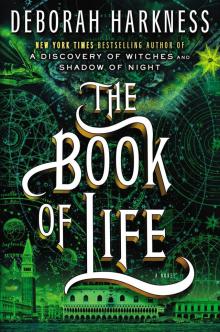 The Book of Life
The Book of Life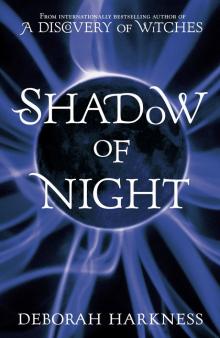 Shadow of Night
Shadow of Night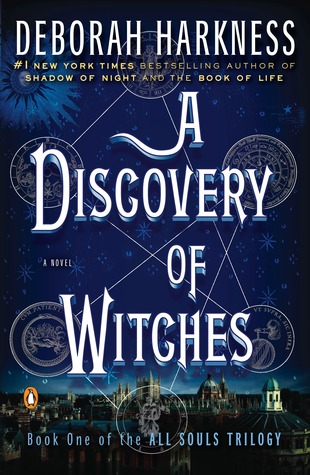 A Discovery of Witches
A Discovery of Witches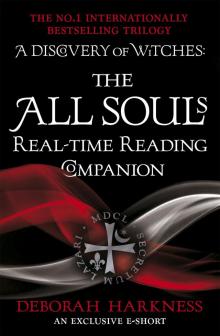 The All Souls Real-Time Reading Companion
The All Souls Real-Time Reading Companion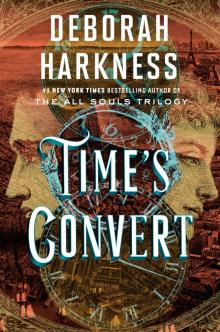 Time's Convert
Time's Convert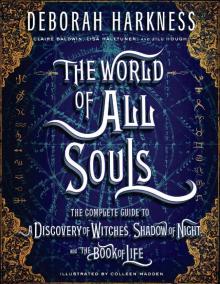 The World of All Souls
The World of All Souls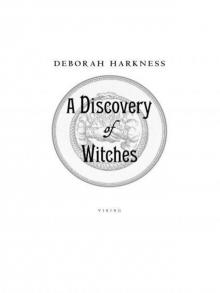 A Discovery of Witches: A Novel (All Souls Trilogy)
A Discovery of Witches: A Novel (All Souls Trilogy) Shadow of Night: A Novel
Shadow of Night: A Novel